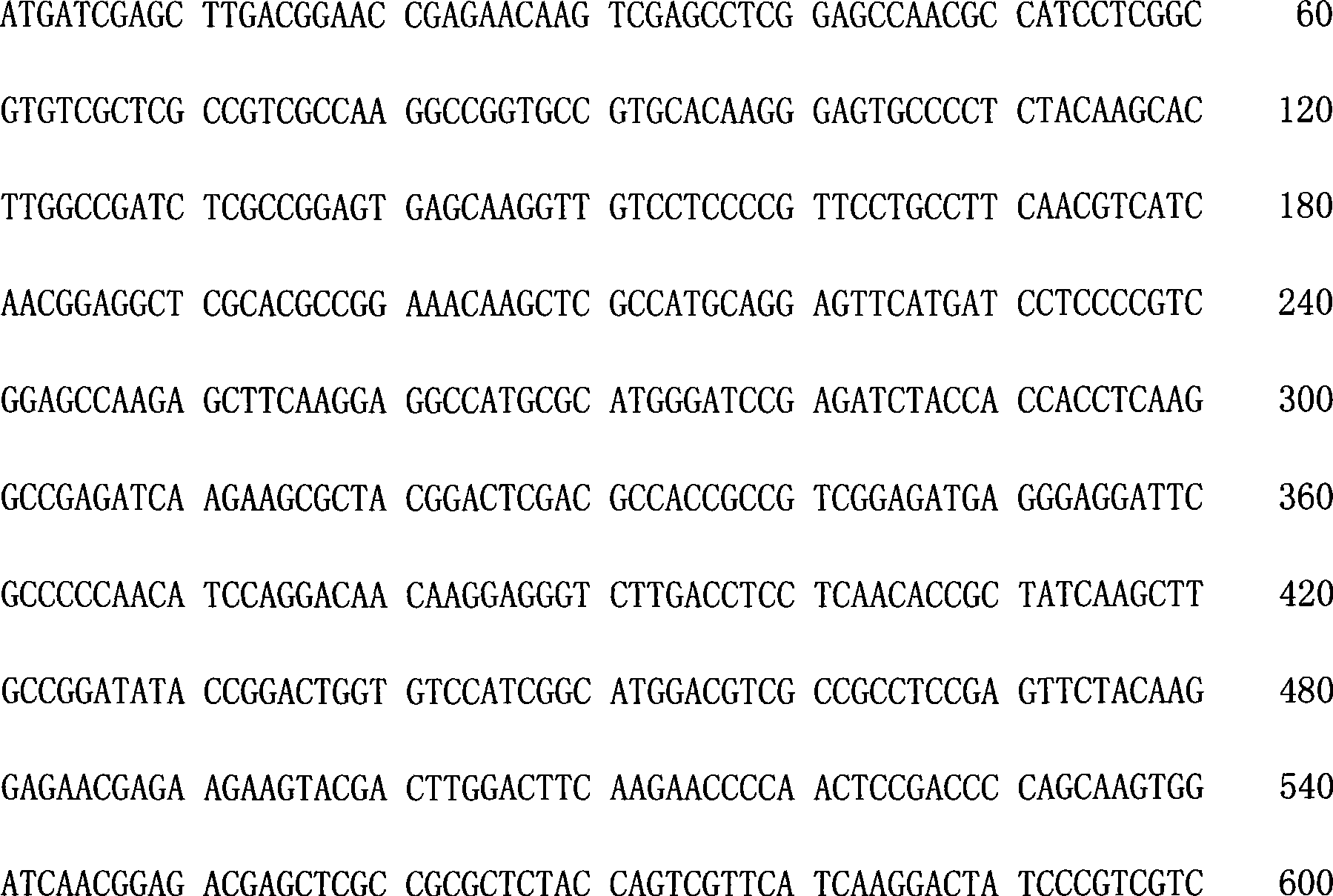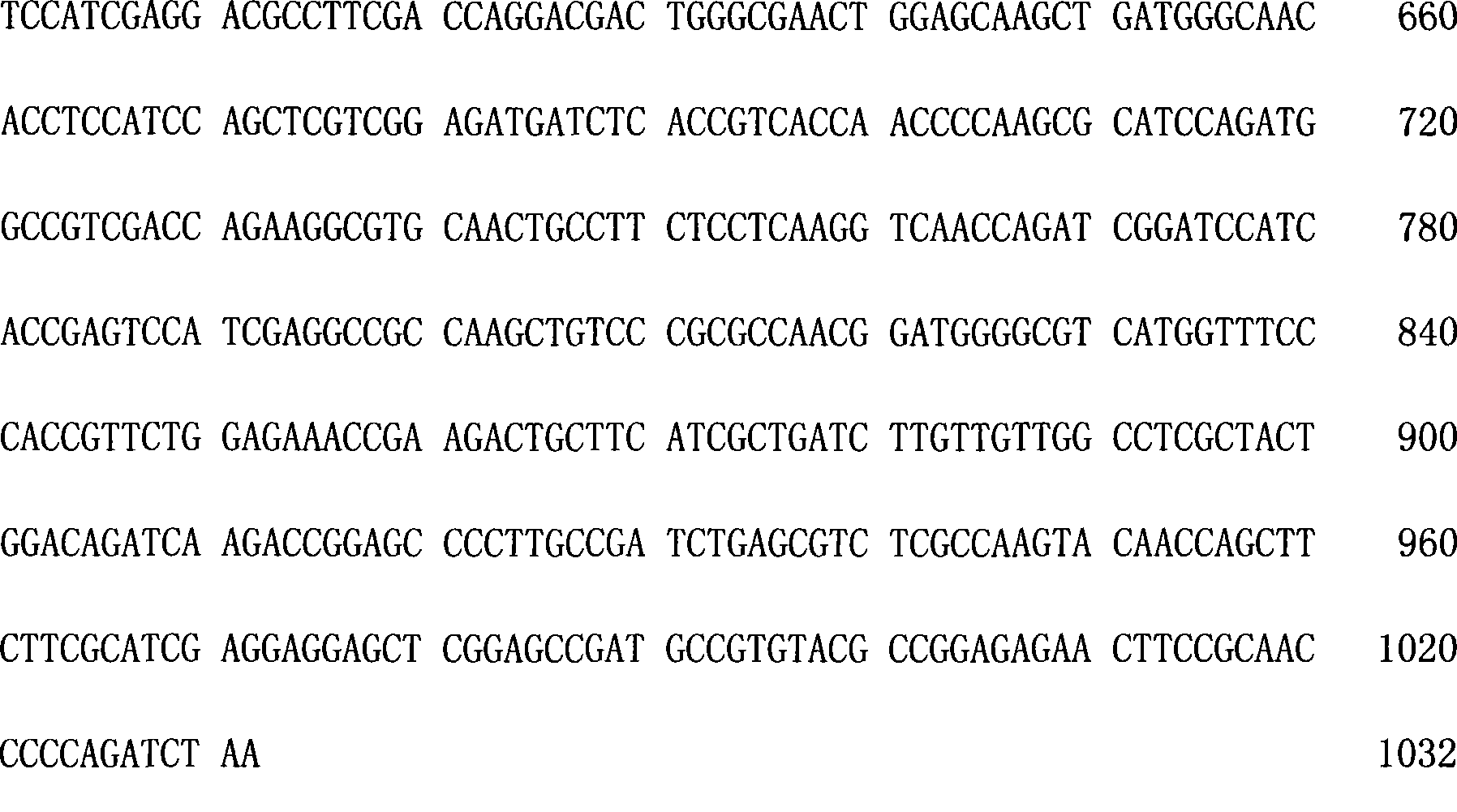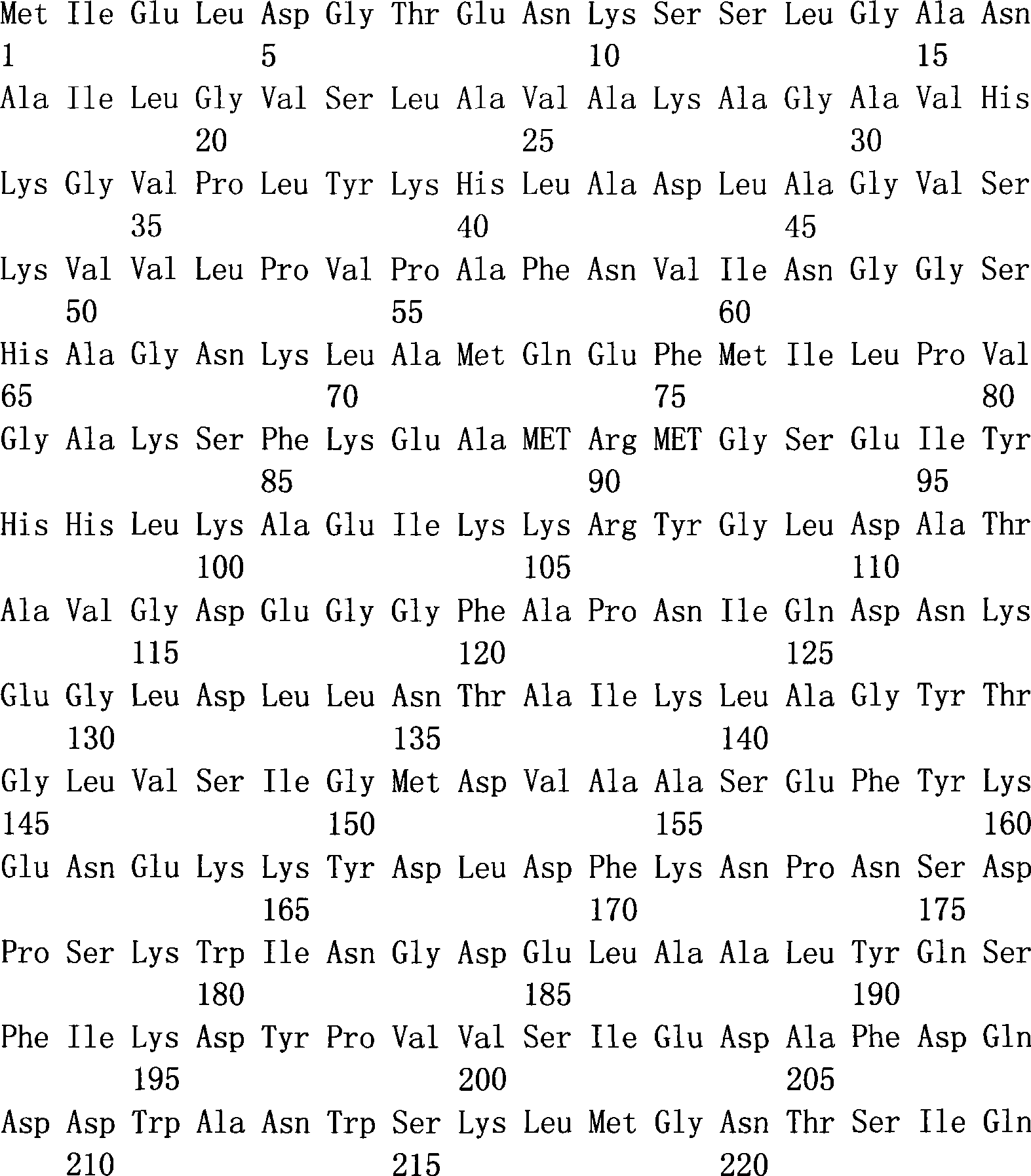Nematode epidermal protein for anti-insect blood cell immunity and gene order
A technology of epidermal protein and blood cells, applied in genetic engineering, plant genetic improvement, antibody medical components, etc., can solve the problem of not being purified
- Summary
- Abstract
- Description
- Claims
- Application Information
AI Technical Summary
Problems solved by technology
Method used
Image
Examples
Embodiment 1
[0012] Embodiment 1 Cultivation and collection of nematodes
[0013] Use artificial medium (mainly containing bean flour, flour, eggs, animal liver and high-temperature amylase, etc.) to cultivate Grignard nematodes, with a volume of about 1 cm. 3 The sponge was used as a carrier, filled into a 500ml Erlenmeyer flask, and cultivated in a greenhouse at 30°C for 30 days. After the nematodes are cultured, collect the nematodes, take out the sponge in the culture bottle, soak the sponge in ventilated tap water for 1 hour, filter the sponge out with a roving cloth, and then wash the filtrate with tap water repeatedly to completely remove the culture medium residue. Treat the collected nematodes with a final concentration of 0.5% sodium hypochlorite for 15 minutes, then thoroughly wash away the sodium hypochlorite with tap water, then replace with distilled water and ventilate for 48 hours, and finally filter the distilled water with fine gauze to collect nematodes.
Embodiment 2
[0014] Example 2 Extraction and purification of nematode epidermal protein
[0015] Soak the nematodes in pre-cooled 35% ethanol for 30 minutes, filter out the nematodes with fine gauze, collect the filtrate, freeze the filtrate in a -80°C refrigerator overnight, and then freeze-dry it to a dry powder state. The dry powder was dissolved in MilliQ water to a final concentration of 2 mg / ml total protein, separated by 8% preparative Native-PAGE (80V 20min, 180V 1h30min), and then electroeluted on a Mini Whole GelEluter (Bio-Rad) (100mA 25min ), collect the elution fractions respectively, and analyze the purity of each fraction with 12% SDS-PAGE, and use BCA TM The assay kit (Pierce) was used to measure the concentration of each component, and the protein concentration of each component was adjusted to 20 μg / ml with MilliQ water.
Embodiment 3
[0016] Example 3 Detection of Epidermal Protein Activity by Reactive Oxygen Species (ROS) Levels in Blood Cells of Melonella mellonella
[0017] Use 75% alcohol to sterilize the surface of the fifth instar larvae of Mellonella mellonella, cut off the front legs of the larvae, draw 10 μl of hemolymph (containing about 100,000 blood cells) from the cut with a pipette, and quickly add it to 0.1% DCFH-DA Grace insect culture medium (Grace insect culture medium, Sigma G-9771), incubated at room temperature for 30 min. The hemocytes obtained after incubation were washed with Grignard insect medium for 3 times to remove extracellular DCFH-DA, and then incubated in Grignard insect medium containing 10 μg / ml LPS and 20 μg / ml epidermal protein fraction at 37°C for 30 min, and Grignard insect medium containing 10 μg / ml LPS and 20 μg / ml endotoxin-free BSA (Merck-Calbiochem) was used as a control. Gently wash and blow with a pipette to disperse the cell mass, and take a sample for observa...
PUM
 Login to View More
Login to View More Abstract
Description
Claims
Application Information
 Login to View More
Login to View More - R&D
- Intellectual Property
- Life Sciences
- Materials
- Tech Scout
- Unparalleled Data Quality
- Higher Quality Content
- 60% Fewer Hallucinations
Browse by: Latest US Patents, China's latest patents, Technical Efficacy Thesaurus, Application Domain, Technology Topic, Popular Technical Reports.
© 2025 PatSnap. All rights reserved.Legal|Privacy policy|Modern Slavery Act Transparency Statement|Sitemap|About US| Contact US: help@patsnap.com



